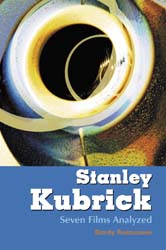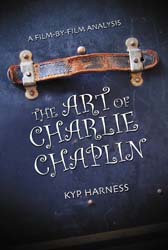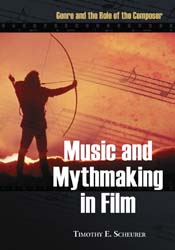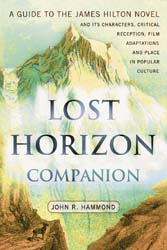Here's what's currently on tap from McFarland, the premier publisher of film and television reference books. I'm particularly interested in the Kubrick and Chaplin books. In college, I participated in the making of a modern Chaplin-style film short, and I know from first-hand experience how he made the incredibly difficult look positively effortless. As for Kubrick, I never get tired of re-visiting his work, from 2001: A Space Odyssey to A Clockwork Orange to Full Metal Jacket to Eyes Wide Shut.
This comprehensive reference guide introduces James Hilton’s novel Lost Horizon for contemporary students and general readers. The opening section provides a summary of Hilton’s life and describes his circumstances at the time of writing the novel. This is followed with a chapter-by-chapter summary of the plot, a glossary of words and phrases which may be helpful to twenty-first century readers, and an alphabetically arranged guide to the novel’s characters. In addition, the author examines the initial critical reception of the book, its publishing history, and the success of its major film adaptations in separate chapters. Several appendices provide recommended questions for discussion and Hilton’s original preface to Lost Horizon.
 Stanley Kubrick
Stanley KubrickStanley Kubrick had a great talent for creating memorable images—such as his famous jump cut from a bone tossed into the prehistoric sky to a spaceship orbiting the earth in 2001. Like the composer of a great symphony, Kubrick also had the ability to draw his memorable moments into a lyrical whole. Balancing harmony with discord, he kept viewers on edge by constantly shifting relationships among the dramatic elements in his movies. The results often confounded expectations and provoked controversy, right up through Eyes Wide Shut, the last film of his life.This book is an intensive, scene-by-scene analysis of Kubrick’s most mature work—seven meticulously wrought films, from Dr. Strangelove to Eyes Wide Shut. In these films, Kubrick dramatized the complexity and mutability of the human struggle, in settings so diverse that some critics have failed to see the common threads. Rasmussen traces those threads and reveals the always shifting, always memorable, always passionately rendered pattern
 The Art of Charlie Chaplin
The Art of Charlie Chaplin This thorough critical study of Chaplin’s films traces his acting career chronologically, from his initial appearance in 1914’s Making a Living to his final starring role in 1957’s A King in New York. Emphasizing Chaplin’s technique and the steady evolution of his Tramp character, the author frames the biographical details of Chaplin’s life within the context of his acting and filmmaking career, giving special attention to the films Chaplin directed/produced.
 Music and Mythmaking in Film
Music and Mythmaking in FilmThis work studies the conventions of music scoring in major film genres (e.g., science fiction, hardboiled detective, horror, historical romance, western), focusing on the artistic and technical methods that modern composers employ to underscore and accompany the visual events. Each chapter begins with an analysis of the major narrative and scoring conventions of a particular genre and concludes with an in-depth analysis of two film examples from different time periods. Several photographic stills and sheet music excerpts are included throughout the work, along with a select bibliography and discography.





No comments:
Post a Comment